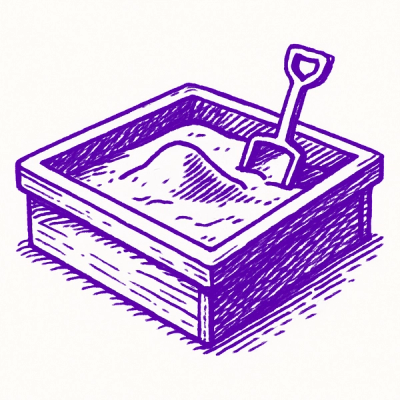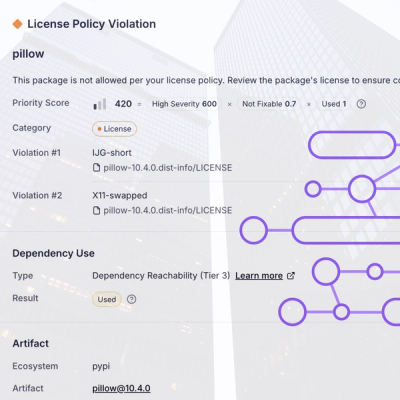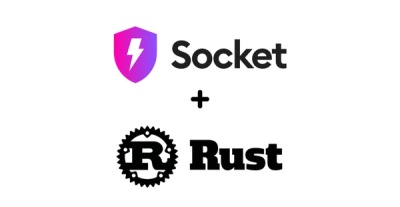
Research
/Security News
Critical Vulnerability in NestJS Devtools: Localhost RCE via Sandbox Escape
A flawed sandbox in @nestjs/devtools-integration lets attackers run code on your machine via CSRF, leading to full Remote Code Execution (RCE).
_______ .______ ___ .______ __ __ __ _______. __ __
/ _____|| _ \ / \ | _ \ | | | | | | / || | | |
| | __ | |_) | / ^ \ | |_) | | |__| | | | | (----`| |__| |
| | |_ | | / / /_\ \ | ___/ | __ | | | \ \ | __ |
| |__| | | |\ \----./ _____ \ | | | | | | | | .----) | | | | |
\______| | _| `._____/__/ \__\ | _| |__| |__| |__| |_______/ |__| |__|
A Python package to search & delete messages from mailboxes in Office 365 using Microsoft Graph API
* Searching
* Create new Search
* Update a Search
* Get Search Folder
* Get Search messages
* Delete Search
* Deleting
* Delete a Message
* Mailbox Rules
* List Mailbox Rules
* Users
* Return a list of email addresses in your Azure AD Tenant
* MailFolder
* Create MailFolder
* Move message to a MailFolder
* List messages in a MailFolder
To use, please install the package locally:
Locally:
bash git clone git@github.com:swimlane/graphish.git cd graphish pip install setup.py
OS X & Linux:
pip install graphish
Windows:
pip install graphish
To use, you will need to have created a new application in Azure AD. Follow these instructions to obtain the appropriate secrets:
https://docs.microsoft.com/en-us/graph/auth-register-app-v2
Please also checkout this blog post about graphish https://swimlane.com/blog/swimlane-open-sources-graphish/
Additionally, if you would like graphish to search all users within your Azure tenant you need to provide User.Read.All permissions to your Azure AD application during registration.
Once you have this information, then you can do the following:
To use graphish you must first create a GraphConnector object that contains all your authentication information. Once you have created this connector object then a user will provide this object as a mandatory parameter to other classes within this package.
Here are the different ways to generate a GraphConnector object and are dependent on which authentication workflow method you have choose for your application.
To use graphish with delegated permissions and a username and password you will need to supply the clientId, clientSecret, tenantId, as well as your accounts username and password.
By using the delegated authentication (Single-Page, Web Apps, Mobile & Native Apps - Grant Auth Flow) you can search your own mailbox by not passing a userPrincipalName or if you would like to search another mailbox then provide the userPrincipalName (e-mail address):
from graphish import GraphConnector
connector = GraphConnector(
clientId='14b8e5asd-c5a2-4ee7-af26-53461f121eed', # you applications clientId
clientSecret='OdhG1hXb*UB/ho]A?0ZCci13KMflsHDy', # your applications clientSecret
tenantId='c1141d00-072f-1eb9-2526-12802571dd41', # your applications Azure Tenant ID
userPrincipalName='first.last@myorg.onmicrosoft.com', # the user's mailbox you want to search
password='somepassword' # password of your normal or admin account
)
from graphish import GraphConnector
# For legacy app grant flow provide a username and password
connector = GraphConnector(
clientId='14b8e5asd-c5a2-4ee7-af26-53461f121eed', # you applications clientId
clientSecret='OdhG1hXb*UB/ho]A?0ZCci13KMflsHDy', # your applications clientSecret
tenantId='c1141d00-072f-1eb9-2526-12802571dd41', # your applications Azure Tenant ID
userPrincipalName='first.last@myorg.onmicrosoft.com', # the user's mailbox you want to search
password='somepassword' # password of your normal or admin account
userPrincipalName='some.account@myorg.onmicrosoft.com' # the user's mailbox you want to search
)
To use graphish with application permissions you will need to supply the clientId, clientSecret, and tenantId.
By using the application authentication (Client Credentials Grant Auth Flow) you can search a specific mailbox or ALL mailboxes.
from graphish import GraphConnector
# For backend / client_credential auth flow just supply the following
connector = GraphConnector(
clientId='14b8e5asd-c5a2-4ee7-af26-53461f121eed', # you applications clientId
clientSecret='OdhG1hXb*UB/ho]A?0ZCci13KMflsHDy', # your applications clientSecret
tenantId='c1141d00-072f-1eb9-2526-12802571dd41', # your applications Azure Tenant ID
)
from graphish import GraphConnector
# For backend / client_credential auth flow just supply the following
connector = GraphConnector(
clientId='14b8e5asd-c5a2-4ee7-af26-53461f121eed', # you applications clientId
clientSecret='OdhG1hXb*UB/ho]A?0ZCci13KMflsHDy', # your applications clientSecret
tenantId='c1141d00-072f-1eb9-2526-12802571dd41', # your applications Azure Tenant ID
scopes=['https://graph.microsoft.com/.default'] # the scopes (default value of https://graph.microsoft.com/.default)
)
Once you have determined your appropriate authentication and have created a GraphConnector object, then you can create a new Search Object. Once you have your Search Object then you can create a new search, retrieve messages from your search, get search folders, update a search folder, or delete a search. When you create a new search, this will create a hidden folder in the users mailbox (that the user is unable to see) and it will populate based on your search filterQuery.
When you create (or instantiate) a Search object you can specify the scope of your search. There are three use-cases related to specifying a search:
userPrincipalName parameter on the Search classuserPrincipalName parameter on the Search class when you are using username and password authentication workflowuserPrincipalName parameter on the Search class. This will pull in all users within your Azure AD via the ListUsers endpoint.NOTE: If using application authentication workflow, you can either pass in a single or list of userPrincipalName's. If you DO NOT pass in a userPrincipalName then Search will attempt to search all mailboxes in your Azure AD tenant!
from graphish import Search
search = Search(connector)
new_search = search.create(
searchFolderName='Phishing Search',
sourceFolder='inbox',
filterQuery="contains(subject, 'EXPIRES')"
)
You can retrieve messages identified during your search by using the same instance of your Search object and using the messages method:
# get all the messages in your search folder
for message in search.messages():
print(message) # Returns all attributes from a message
print(message['id']) # returns the message ID
print(message['headers']) # Returns the RFC822 headers of the message
If you are needing a list of mail folders in a mailbox you can use the folders method to retrieve them:
# get a list of search folders
search.folders()
If you are needing a list of all users within your search scope:
# get a list of users
search.user
If you have performed a search and want to move a message to a mail folder, you can do so by doing the following:
from graphish import Search
from graphish import GraphConnector
from graphish import MailFolder
connector = GraphConnector(
clientId='14b8e5asd-c5a2-4ee7-af26-53461f121eed', # you applications clientId
clientSecret='OdhG1hXb*UB/ho]A?0ZCci13KMflsHDy', # your applications clientSecret
tenantId='c1141d00-072f-1eb9-2526-12802571dd41' # your applications Azure Tenant ID
)
search = Search(connector, userPrincipalName='some.account@myorg.onmicrosoft.com')
new_search = search.create(
searchFolderName='Phishing Search',
sourceFolder='inbox',
filterQuery="contains(subject, 'phishing')"
)
messages = search.messages()
for message in messages:
print(message['internetMessageId'])
print(message['fromAddress'])
print(message['id'])
mail_folder = MailFolder(connector,'some.account@myorg.onmicrosoft.com')
moved_message = mail_folder.move_message(message['id'],'junkemail')
print(moved_message)
You can also create a new MailFolder using the MailFolder class:
from graphish import MailFolder
mail_folder = MailFolder(connector,'some.account@myorg.onmicrosoft.com')
new_mail_folder = mail_folder.create('My Phishing Folder')['id']
If you wanted to make changes to a search performed you can update the search folder and individual criteria like the name of the search folder, the sourceFolder (root to search), or the filterQuery itself:
# update your search folder property's
search.update(
searchFolderName='Some Phishing Search',
sourceFolder='inbox',
filterQuery="contains(subject, 'EXPIRES!')"
)
You can also delete a search performed by using the delete method:
# delete the current search folder
search.delete()
Additionally, you can list any mailbox rules:
from graphish import Rules
rules = Rules(
connector,
userPrincipalName='some.account@myorg.onmicrosoft.com'
)
print(rules.get())
You can find additional examples here
Josh Rickard – @MSAdministrator – rickardja@live.com
Distributed under the MIT license. See LICENSE for more information.
git checkout -b feature/fooBar)git commit -am 'Add some fooBar')git push origin feature/fooBar)FAQs
A Python package to search & delete & move emails using Microsoft Graph API
We found that graphish demonstrated a healthy version release cadence and project activity because the last version was released less than a year ago. It has 1 open source maintainer collaborating on the project.
Did you know?

Socket for GitHub automatically highlights issues in each pull request and monitors the health of all your open source dependencies. Discover the contents of your packages and block harmful activity before you install or update your dependencies.

Research
/Security News
A flawed sandbox in @nestjs/devtools-integration lets attackers run code on your machine via CSRF, leading to full Remote Code Execution (RCE).

Product
Customize license detection with Socket’s new license overlays: gain control, reduce noise, and handle edge cases with precision.

Product
Socket now supports Rust and Cargo, offering package search for all users and experimental SBOM generation for enterprise projects.